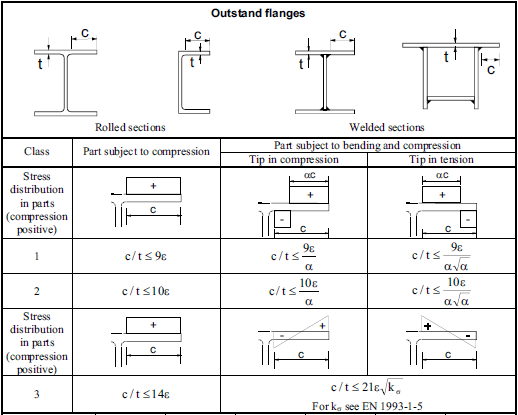
Hello all!
Above table is from Eurocode. According to the table, the stress distribution in a flange of a beam can be negative in part of the flange when the part is subject to bending and compression. Why is this?
If we have a beam that is compressed and bent at the same time, shouldn't the stress vary from positive to negative as a function of distance from the neutral axis (in vertical distance in the picture), not as a function of distance from the web, along the flange as in the picture? Why does the stress vary like that, from the "bottom" of the web to the tip of the flange?
And what is the meaning of the factor alpha, and how to we calculate it?
Thank you!
